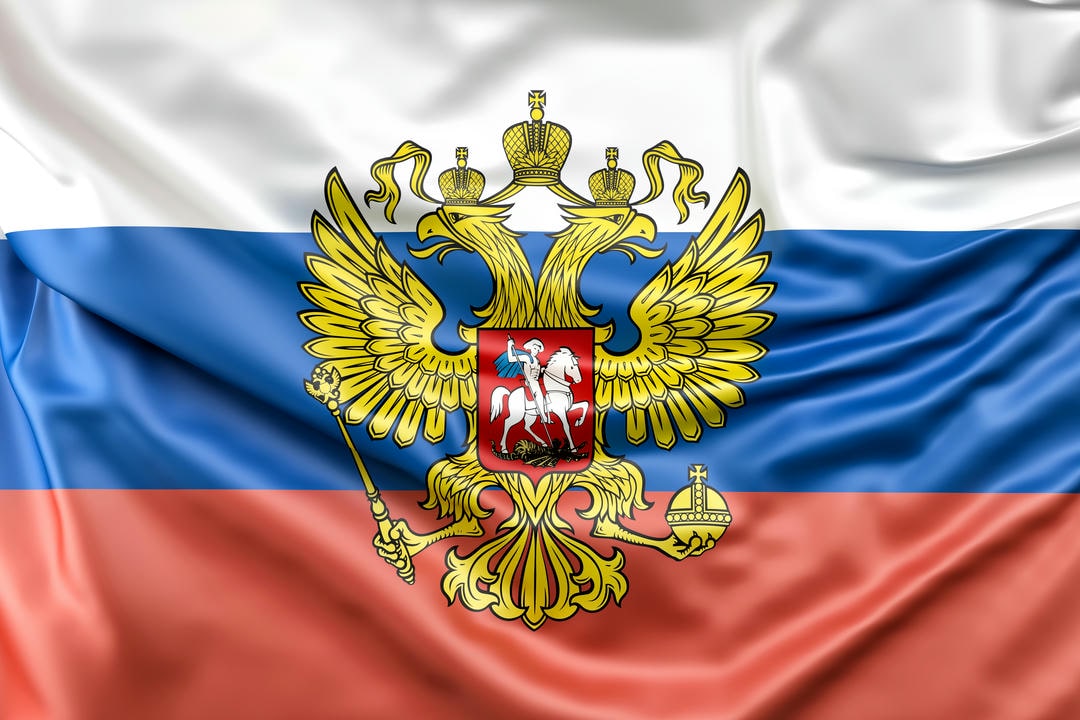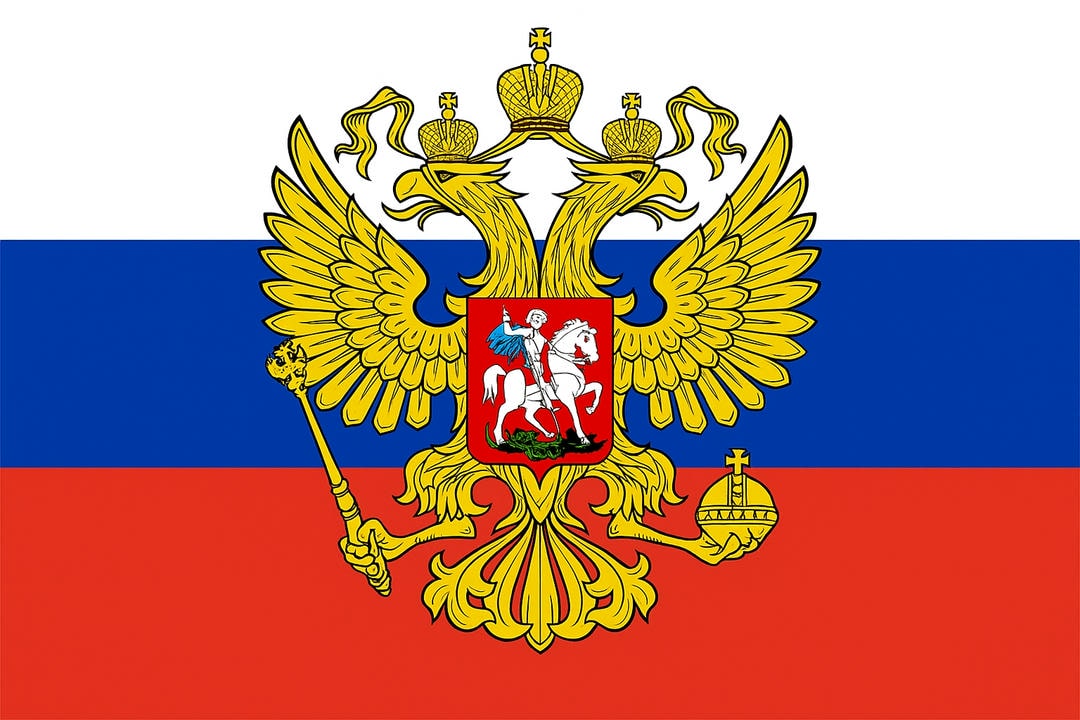The double-headed eagle serves as a potent emblem of Russia, intricately woven into its historical narrative and geopolitical identity. This symbol, rooted in ancient civilizations and refined through Byzantine influence, encapsulates the nation’s complex duality. Each head represents divergent perspectives, hinting at the multifaceted nature of Russia’s global interactions. Understanding this emblem’s significance reveals deeper insights into Russia’s ambitions and challenges, prompting further exploration of its enduring legacy in contemporary society.
Historical Roots of the Double-Headed Eagle

The double-headed eagle is one of the most enduring and recognizable symbols in Russian history, but its story begins long before it became a national emblem. Its origins trace back over three millennia to the Hittite civilization of Anatolia (modern-day Turkey) around the 13th century B.C. Archaeological finds, including stone reliefs and royal insignia, depict this majestic creature with two heads looking in opposite directions—an early testament to its association with sovereignty and divine protection. For the Hittites, the double-headed eagle symbolized supreme authority over both east and west, as well as a spiritual guardianship over earth and sky.
Byzantine Adoption and Transformation
The symbol re-emerged centuries later in the Eastern Roman (Byzantine) Empire, gaining new layers of meaning. After Emperor Constantine I moved the capital to Byzantium (later Constantinople), the empire increasingly saw itself as a bridge between Europe and Asia, Christianity and classical antiquity. By the 10th century, the double-headed eagle had become an imperial emblem, signifying unity and dominion over both the eastern and western parts of the empire. It was often displayed atop banners, coins, and church mosaics, reinforcing the emperor’s claim as God’s chosen ruler on earth.
The Russian Connection: Marriage and Inheritance
Russia’s adoption of the double-headed eagle is deeply intertwined with a significant dynastic union. In 1472, Grand Prince Ivan III (“Ivan the Great”) of Moscow married Sophia (Zoë) Palaiologina, the niece of the last Byzantine emperor, Constantine XI. Through this marriage, not only did Russia forge a bloodline connection with the once-great empire, but it also inherited its rich symbolic legacy. Ivan III was quick to incorporate the double-headed eagle into his coat of arms, presenting Moscow as the “Third Rome”—the legitimate successor to Rome and Byzantium after their fall.
This act was more than symbolic; it marked Russia’s growing self-awareness as a major power and protector of Orthodox Christianity. Over time, the emblem grew in prominence, eventually becoming central to the Russian state’s visual identity.
Symbolism and Meaning: Power, Unity, Heritage
The double-headed eagle’s two faces are rich in meaning. Traditionally, one head looks west toward Europe while the other gazes east toward Asia, capturing Russia’s unique geography and its historical balancing act between cultures. This duality also represents vigilance—watching over both present threats and future opportunities.
In Russian heraldry, the eagle is often crowned with two imperial crowns (sometimes three), representing unity between various lands under one sovereign. The orb and scepter it holds further symbolize authority and statehood. The black color—a Byzantine inheritance—stands for strength and resilience.
Evolution in Art and National Identity
The double-headed eagle has served as a powerful emblem in Russian history, evolving to reflect the nation’s shifting political landscape and cultural identity. Introduced during the reign of Ivan III, the gold eagle originally symbolized the influence of Byzantine heritage—an inheritance that would shape Russia’s Orthodox faith and legitimize its rulers.
Under Peter the Great, the eagle was modernized to project Russia’s emergence as a major European power. Its image became omnipresent: gilded on state buildings, emblazoned on military standards, stamped on coins, and featured in official documents. Through these centuries, the eagle mirrored the character of Russian governance—imperial, authoritative, and deeply tied to Orthodox tradition.
The 20th century brought dramatic change. After the 1917 revolution and the fall of the monarchy, the double-headed eagle vanished from official use, replaced by Soviet symbols. Yet, it never lost its cultural resonance. Artists interpreted its form in various ways—sometimes stripped of color or stylized to suit new ideologies—each adaptation marking a chapter in Russia’s evolving identity.
In 1993, after decades of absence, the double-headed eagle was restored to Russia’s coat of arms. This revival signaled a reconnection to traditional values and a renewed embrace of national heritage. Today, the eagle embodies Russia’s dual nature: honoring its Orthodox and imperial legacy while asserting its place as a modern power with both Eastern and Western ties.
The Byzantine legacy remains especially significant. It not only provided religious and political legitimacy but also offered a narrative of unity between East and West—a theme that continues to shape Russian self-perception and aspirations for cultural cohesion.
The double-headed eagle thus stands as more than a historic symbol; it is a living emblem of Russia’s past, present, and ambitions for the future.
Cultural Significance
The double-headed eagle is one of the most recognizable and enduring symbols of Russian civilization. Far more than a mere political insignia, it represents the resilience and adaptability that have characterized Russian history for centuries. This emblem, which sits prominently on the national coat of arms alongside St. George—the patron and protector of Moscow—reflects a unique blend of martial strength and spiritual guardianship.
The origins of the double-headed eagle in Russia trace back to the late 15th century, when Ivan III adopted it after his marriage to Sophia Palaiologina, niece of the last Byzantine Emperor. By embracing this symbol, Russia asserted itself as the true heir of Byzantium, inheriting both its spiritual legacy and imperial ambitions. The eagle’s two heads gazing in opposite directions—one to the west, the other to the east—signify Russia’s vast expanse and its historical role as a bridge between Europe and Asia.
For Russians, the double-headed eagle is a powerful source of national pride. It stands for continuity across turbulent eras, resilience in times of adversity, and the aspiration for unity across a sprawling landmass. The symbol appears everywhere—from royal regalia and ancient coins to cathedral domes and modern government documents—testifying to its deep entrenchment in the national consciousness.
In Russian folklore, eagles are often depicted as wise rulers and guardians. This imagery reinforces the eagle’s association with authority, protection, and vision. The two crowns above each head have sometimes been interpreted as representing dominion over both European and Asian territories, highlighting Russia’s dual identity as both Eastern and Western.
Contemporary Relevance
In today’s Russia, the double-headed eagle continues to encapsulate the complexities of national identity. It reflects not only historical continuity but also the nation’s ongoing efforts to balance tradition with modernity. The eagle’s dual gaze embodies Russia’s attempts to navigate relationships between East and West, asserting its sovereignty while engaging with global powers.
Geopolitically, the symbol resonates deeply amid contemporary challenges. It serves as a reminder of Russia’s rich heritage and enduring aspirations, even as the country faces pressures both from within and abroad. The double-headed eagle thus stands as an emblem of unity and authority in an era marked by rapid change and geopolitical tension.
Lasting Legacy
The presence of the double-headed eagle on countless Russian artifacts underscores its lasting significance. It is more than a relic of the past; it is a living emblem that continues to inspire a sense of shared history and destiny among Russians today.
The double-headed eagle remains a potent symbol at the heart of Russian life and identity. It captures the nation’s storied past, its complex present, and its hopes for the future. More than just an icon, it expresses Russia’s enduring quest for unity, strength, and a place between continents and cultures. In a world of shifting alliances and uncertain horizons, the double-headed eagle serves as both guardian and guide—a testament to Russia’s unique heritage and its ongoing journey as a nation.




